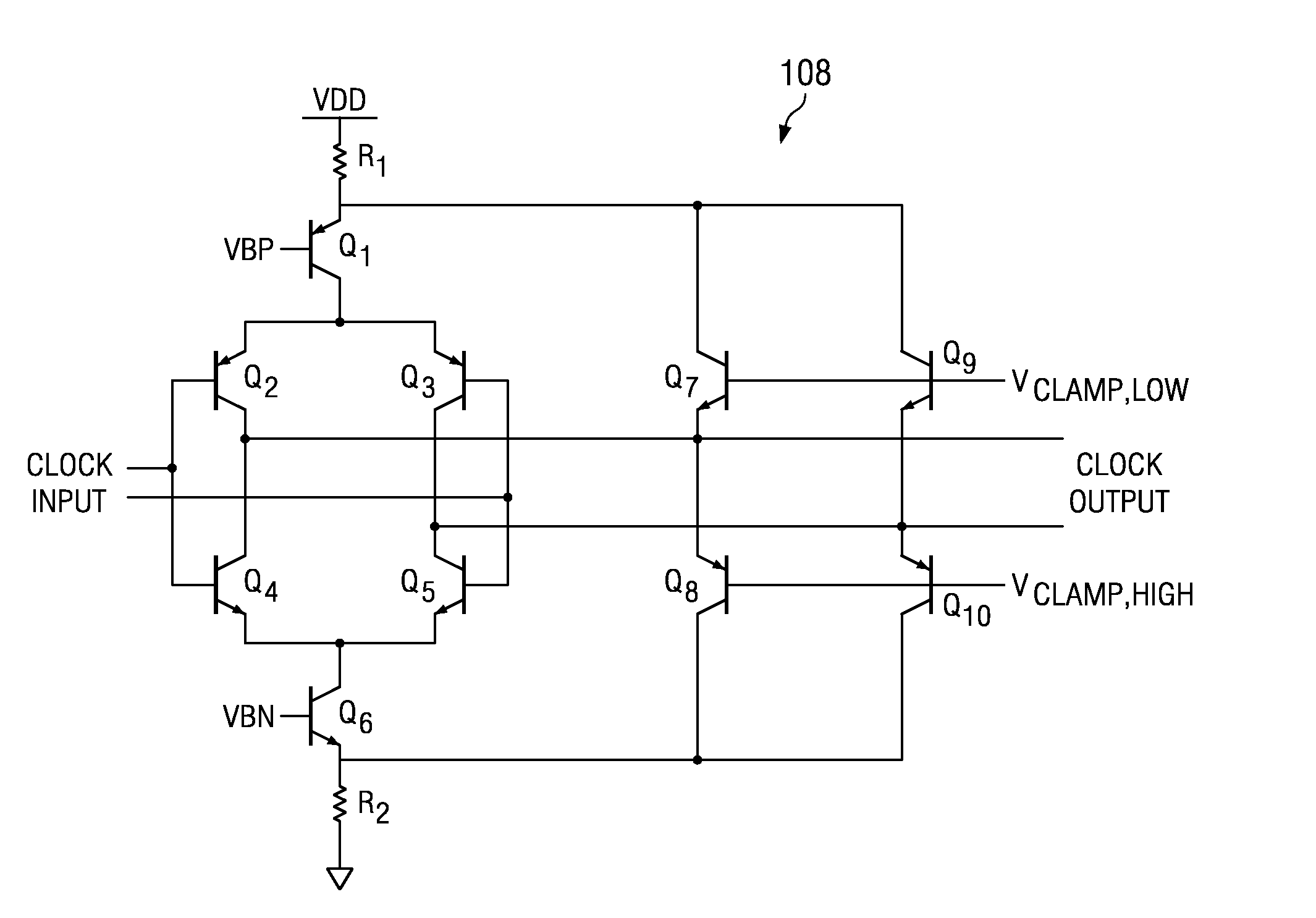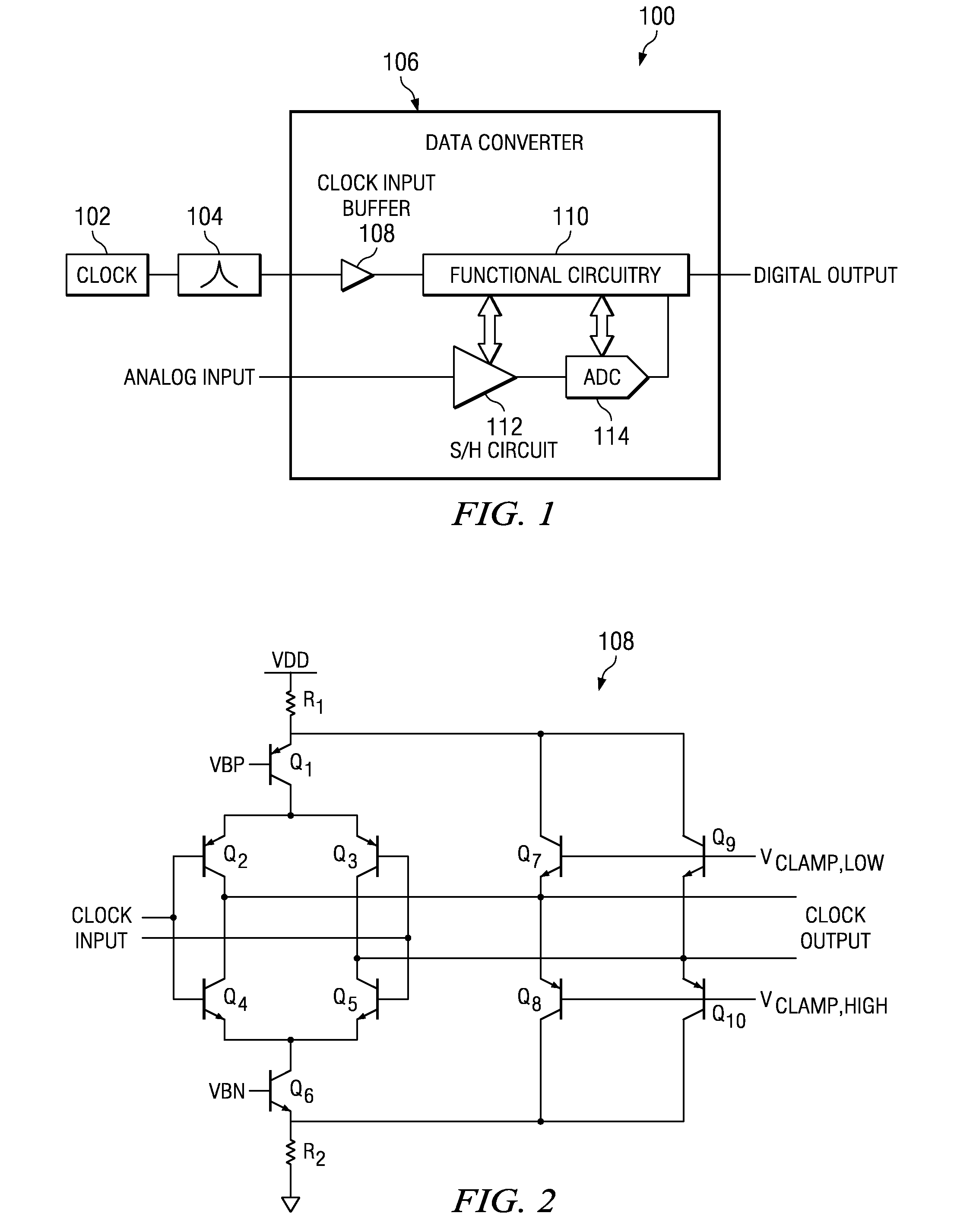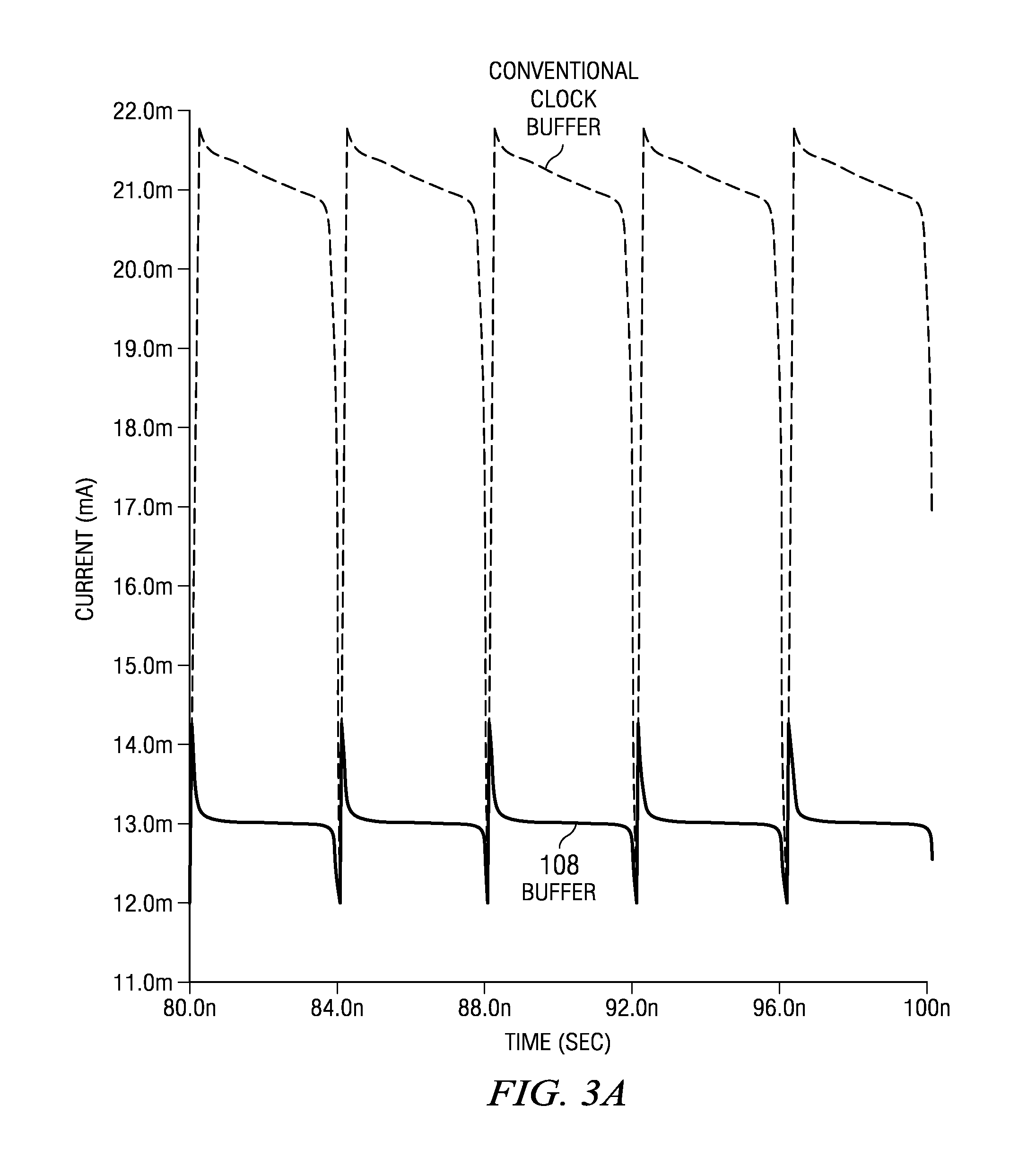Clock buffer
- Summary
- Abstract
- Description
- Claims
- Application Information
AI Technical Summary
Benefits of technology
Problems solved by technology
Method used
Image
Examples
Embodiment Construction
[0019]Refer now to the drawings wherein depicted elements are, for the sake of clarity, not necessarily shown to scale and wherein like or similar elements are designated by the same reference numeral through the several views.
[0020]Referring to FIG. 1 of the drawings, the reference numeral 100 generally designates a system in accordance with a preferred embodiment of the present invention. The system 100 generally comprises a clock or oscillator 100, a narrowband filter 104, and a data converter 106. Moreover, the data converter 106 generally comprises a clock input buffer 108, functional circuitry 110, a sample-and-hold (S / H) circuit 112, and an analog-to-digital converter (ADC) 114.
[0021]In operation, the data converter 106 is able to receive an analog input signal and convert it to a digital input signal across several channels. Clock 102 is able to generate a signal (which is generally in the 100 MHz to 200 MHz range). Because of the high frequency range of the analog input sig...
PUM
 Login to view more
Login to view more Abstract
Description
Claims
Application Information
 Login to view more
Login to view more - R&D Engineer
- R&D Manager
- IP Professional
- Industry Leading Data Capabilities
- Powerful AI technology
- Patent DNA Extraction
Browse by: Latest US Patents, China's latest patents, Technical Efficacy Thesaurus, Application Domain, Technology Topic.
© 2024 PatSnap. All rights reserved.Legal|Privacy policy|Modern Slavery Act Transparency Statement|Sitemap



